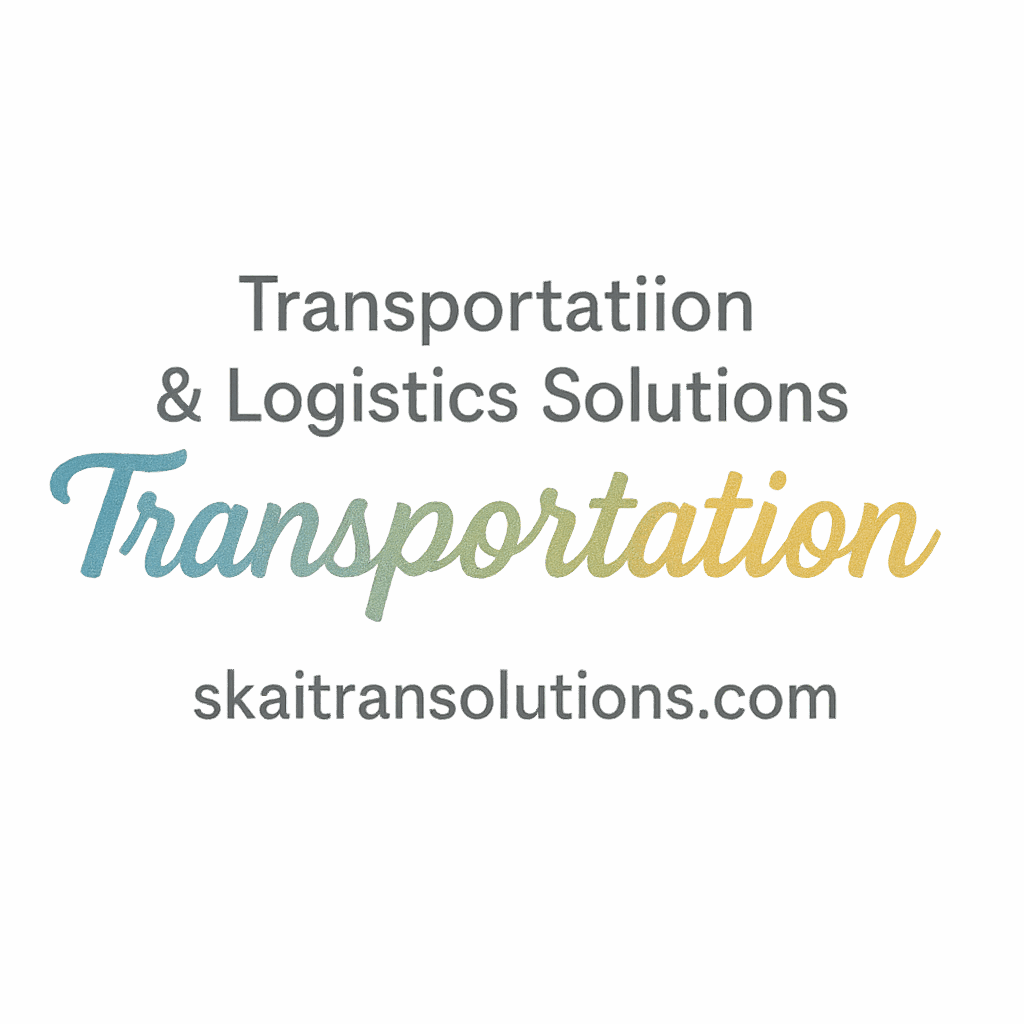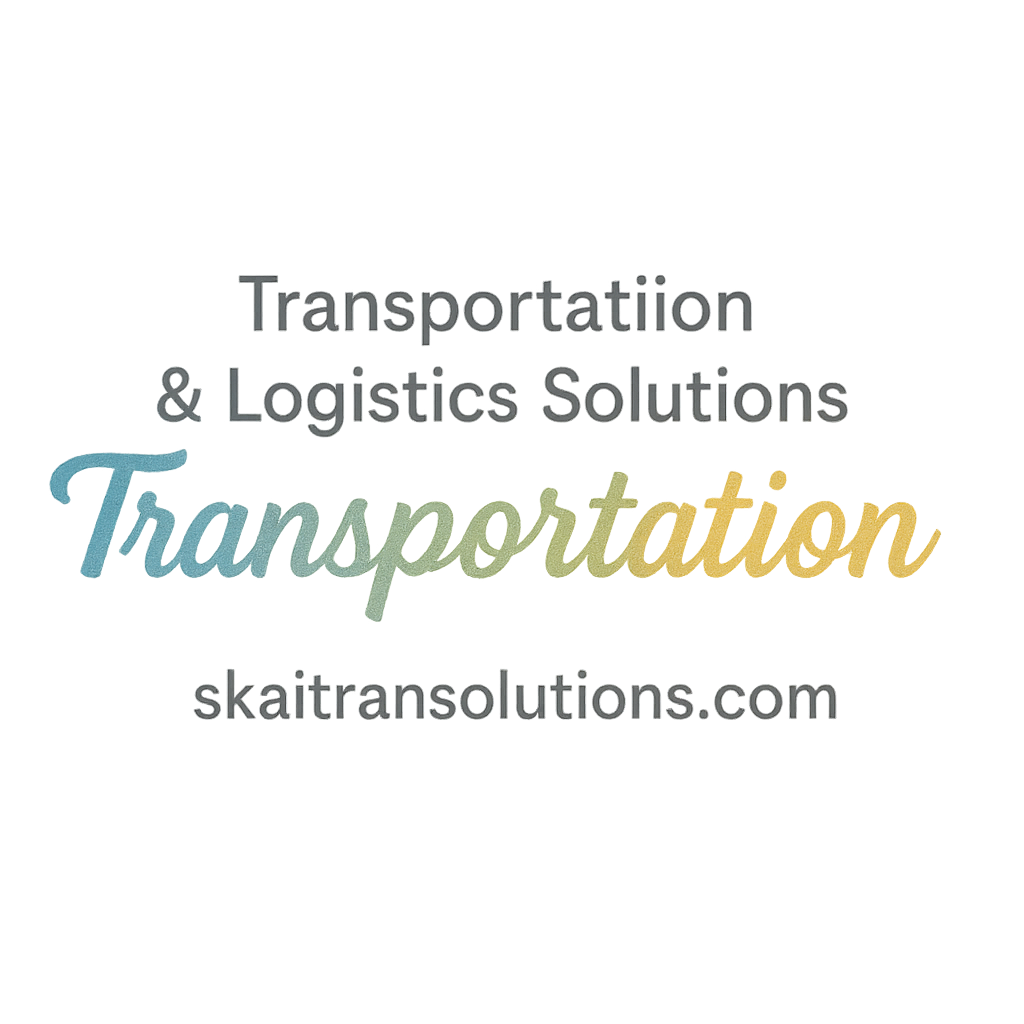Introduction: Why Safety Inspections Matter
Let’s face it — in the transportation industry, safety isn’t just a checkbox. It’s the backbone of operational integrity, driver welfare, and brand reputation. Imagine this: a single oversight in a brake system or a tire blowout on a busy highway can cause massive delays, lawsuits, and in worst cases, loss of lives. That’s why safety inspections are more than regulatory formalities. They’re your fleet’s insurance policy against chaos.
Whether you’re managing a dozen vans or a cross-country logistics operation, regular inspections reduce risk, lower costs, and keep your company in full compliance. So buckle up as we go through the six critical safety inspections every transportation company must conduct, packed with practical insights, tips, and industry best practices.
And if you’re looking for an industry partner that understands safety and efficiency, visit Skai Tran Solutions, your go-to expert in transportation technology innovation and operational best practices.
1. Pre-Trip Vehicle Inspection
Pre-trip inspections are your first line of defense. Before every haul, your drivers should perform a walk-around check to identify any issues before the wheels hit the road.
Key Components Checked
- Tires and wheels
- Headlights and brake lights
- Mirrors and windshields
- Brake functionality
- Fluid levels (oil, coolant, etc.)
- Horns, seat belts, and wipers
Benefits of Pre-Trip Inspections
A well-executed pre-trip inspection helps catch minor issues before they escalate. It also boosts driver accountability, fleet uptime, and regulatory compliance with DOT requirements.
Technology Tools That Help
Many fleets now use mobile inspection apps that allow drivers to digitally submit reports, making the inspection process paperless and trackable — a game-changer for performance tracking and transparency.
2. Brake System Inspection
The braking system is arguably the most critical safety component in any vehicle. Brake failure is a leading cause of road accidents — and it’s 100% preventable.
Signs of Brake Wear
- Squealing or grinding noises
- Reduced stopping power
- Brake pedal feels spongy
- Brake warning lights on the dashboard
Inspection Intervals
According to FMCSA standards, brake inspections should be conducted every 3 months or 25,000 miles — whichever comes first. That’s the baseline, but for fleets under heavy loads or terrain, inspect more frequently.
A brake system check should also be a top item in your safety inspections checklist.
3. Tire and Wheel Inspection
A blowout at highway speeds can turn deadly fast. Your tire and wheel inspection routine should go beyond just checking air pressure.
Tread Depth Requirements
Federal law mandates a minimum tread depth of 4/32 inch on steering axles and 2/32 inch on other tires. Use a tread depth gauge to verify compliance during each inspection.
Common Tire Issues
- Uneven wear patterns (indicates alignment issues)
- Sidewall bulges or cuts
- Embedded nails or debris
- Valve stem leaks
A regular check keeps your fleet not only safe but cost-efficient by extending tire life — a huge plus for cost reduction strategies.

4. Lights, Reflectors, and Signal System Check
Visibility is non-negotiable in transport safety, especially in poor weather or night driving.
DOT Compliance and Visibility Standards
Make sure your vehicles meet DOT lighting regulations, including:
- Headlights
- Taillights
- Turn signals
- Brake lights
- Marker lights
- Reflectors on trailers
Lighting inspections should also check for cracked lenses, moisture buildup, and faulty wiring.
When to Replace Bulbs and Lenses
Replace bulbs as soon as they dim or flicker — not just when they die. Keep extra bulbs on hand, and make light inspection part of your daily or weekly check routine.
5. Emergency Equipment and Safety Gear Audit
It’s not just about what’s under the hood — emergency preparedness is equally vital. Each vehicle should be stocked with the essentials.
Must-Have Equipment on Board
- Fire extinguisher (charged and accessible)
- Reflective triangles or flares
- First-aid kit
- Spare fuses and bulbs
- Emergency contact list
- Tire repair tools and jack
Inspection Procedures and Logs
All safety gear should be inspected monthly. Keep a digital or paper log to show proof during audits. This is especially important for maintaining your safety score with insurance providers.
6. Annual Comprehensive DOT Inspection
This is the big one — the Level I North American Standard Inspection. It’s the most thorough review of your fleet, covering both vehicle and driver compliance.
What Is Included in a Full DOT Inspection
- Brake and fuel systems
- Coupling devices
- Exhaust systems
- Steering mechanisms
- Suspension and frames
- Driver logs and medical cards
You’ll also be evaluated for compliance with hours-of-service, drug/alcohol testing records, and license status.
Preparing for Annual Audits
- Use a checklist to pre-audit your vehicles.
- Educate drivers about what to expect.
- Maintain organized, accessible records.
Having a good audit history can save your company from fines and service disruptions.
Building a Safety-First Culture
Safety inspections only work if your company culture backs them. The best fleets empower drivers, reward diligence, and promote a proactive mindset.
Empowering Drivers to Report Issues
Train your team to speak up. Provide easy ways to report issues anonymously if needed, and never penalize drivers for raising safety concerns.
Using Telematics for Real-Time Safety Alerts
Telematics systems detect issues like harsh braking, engine codes, and low tire pressure in real-time. Integrate these into your fleet technology strategy for faster intervention and fewer surprises.
How to Automate and Simplify Inspections
Manual inspections can be time-consuming and inconsistent. Automation helps standardize processes and catch what humans sometimes miss.
Digital Inspection Checklists
Apps like Fleetio, Whip Around, or Samsara make it easy for drivers to submit digital forms, attach images, and timestamp every step.
Fleet Maintenance Management Platforms
Invest in platforms that connect inspection reports with maintenance schedules. This is crucial for optimizing uptime and staying ahead of key performance indicators (KPIs).
Why Skai Tran Solutions Is Your Safety Partner
When you partner with Skai Tran Solutions, you’re not just choosing a vendor — you’re getting a co-pilot in your safety journey. From cutting-edge tools in autonomous vehicle innovation to tailored logistics and supply chain solutions, we provide the insights and systems that keep your operations running at peak safety and performance.
Explore more transportation industry insights here, and browse our evolving library of safety-focused resources.
Conclusion
Safety isn’t optional in the transportation world — it’s a necessity. These 6 safety inspections every transportation company must conduct are your foundation for staying compliant, preventing accidents, and maintaining a reliable fleet. From the daily pre-trip check to the annual DOT review, each inspection plays a vital role in protecting your drivers, your business, and the public.
Looking for a smarter, streamlined way to manage fleet inspections and optimize safety? Let Skai Tran Solutions help you build a safer tomorrow, one inspection at a time.
FAQs
1. How often should I conduct a pre-trip inspection?
Every single day before the vehicle goes on the road. It’s a DOT requirement and a smart safety practice.
2. What’s the penalty for missing a DOT annual inspection?
You can face heavy fines, out-of-service orders, and even loss of operating authority.
3. Can digital inspection apps replace paper logs?
Absolutely. Digital inspection tools are more efficient, accurate, and help maintain compliance records automatically.
4. What is the most overlooked vehicle inspection area?
Lighting systems. Many fleets forget to regularly check reflectors, turn signals, and tail lights.
5. Should I train my drivers to do brake inspections?
Yes, at least basic checks like brake pad wear, responsiveness, and warning lights.
6. How can telematics help with fleet inspections?
Telematics provides real-time data on vehicle health, helping you prevent breakdowns before they occur.
7. Where can I learn more about safety and compliance strategies?
Check out Skai Tran Solutions’ safety insights and transportation strategy resources for the latest updates and guides.


